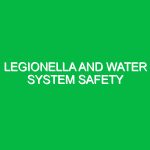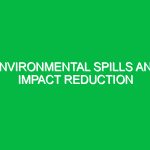Mold, an organism that thrives in damp environments, poses significant risks to health, safety, and the environment (HSE). The importance of mold awareness and prevention cannot be overstated, particularly in workplaces and homes where exposure can lead to serious health issues. Understanding what mold is, the hazards it presents, and how to effectively prevent its growth is crucial for maintaining safe living and working spaces. This article delves into the intricacies of mold awareness and prevention, exploring the various risks associated with mold, safety precautions, and relevant regulations.
Understanding Mold: Definitions and Relevance in HSE
Mold, a type of fungus, reproduces by releasing spores into the air, which can easily infiltrate indoor spaces. These spores are often invisible to the naked eye but can lead to various health problems when inhaled or contacted by skin. Mold grows in areas with excessive moisture, making it a common issue in bathrooms, basements, and places with water leaks.
The relevance of mold awareness and prevention in the HSE domain is multifaceted. Health-wise, mold exposure can trigger allergic reactions, respiratory issues, and other serious health conditions, especially in individuals with pre-existing health problems. From a safety perspective, mold can compromise the structural integrity of buildings, leading to costly repairs and potential hazards. Environmentally, mold can contribute to indoor air quality deterioration, impacting both human health and the surrounding ecosystem.
Identifying Hazards and Risks Associated with Mold
Understanding the potential hazards associated with mold is the first step toward effective prevention. Here are some key risks:
1. Health Risks
Mold exposure poses a variety of health risks. Allergic reactions are the most common, with symptoms ranging from sneezing and coughing to skin irritation. For individuals with asthma or other respiratory conditions, mold can exacerbate symptoms and lead to severe complications. In extreme cases, exposure to certain types of mold, such as black mold (Stachybotrys chartarum), can result in more severe health problems, including neurological issues and chronic respiratory illnesses.
2. Structural Risks
Mold can significantly weaken the materials it grows on. Wood, drywall, and insulation can all be compromised, leading to structural failures. For this reason, mold inspections are usually carried out whenever the ownership of the property changes hands, like during the processes involved for conveyancing services. For instance, a commercial building that experienced a significant water leak was found to have extensive mold growth in its walls. The mold not only caused health concerns for employees but also necessitated a costly renovation to remove damaged materials and remediate the mold.
3. Environmental Risks
Mold can also have negative effects on the environment. It contributes to poor indoor air quality, which can lead to further health issues for occupants. Additionally, mold spores can escape into the atmosphere, potentially affecting outdoor air quality and contributing to broader ecological problems.
Safety Precautions and Best Practices for Mold Awareness and Prevention
Preventing mold growth requires a proactive approach. Here are several actionable safety precautions and best practices:
1. Control Moisture Levels
The most effective way to prevent mold is to control moisture. This can be achieved by:
- Utilizing dehumidifiers in damp areas to maintain humidity levels below 60%.
- Fixing any leaks in plumbing or roofing promptly to eliminate sources of moisture.
- Ensuring proper ventilation in areas prone to moisture, such as bathrooms and kitchens, by installing exhaust fans.
2. Regular Inspections
Conducting regular inspections of your property can help identify potential mold growth before it becomes a significant issue. Check areas like basements, attics, and behind appliances for signs of water damage or mold. In my experience, a routine inspection of a commercial kitchen revealed hidden mold behind a refrigerator due to a small, unnoticed leak. This early detection saved the business from a larger remediation effort later.
3. Proper Cleanup and Maintenance
If mold is found, it is crucial to clean it up properly. For small areas, a mixture of water and detergent can suffice. However, for larger infestations, it is advisable to hire professionals who are trained in mold remediation. Always wear protective gear, such as gloves and masks, when handling mold.
4. Educate Employees and Residents
Training employees and educating residents on mold awareness is vital. They should know how to identify mold, understand the risks associated with it, and know the steps to take if they suspect mold growth. Providing resources and information can empower individuals to take action before mold becomes a significant issue.
Regulations and Standards Governing Mold Awareness and Prevention
In various jurisdictions, mold awareness and prevention are governed by a combination of local, state, and federal regulations. Understanding these regulations is important for both compliance and safety. Here are some key standards and guidelines:
1. Occupational Safety and Health Administration (OSHA)
OSHA provides guidelines related to mold exposure in the workplace, emphasizing the need for employers to maintain safe working environments. Employers are required to minimize mold exposure and ensure proper ventilation in areas where mold may be present.
2. Environmental Protection Agency (EPA)
The EPA offers resources on mold prevention and remediation. Their guidelines include recommendations for moisture control and mold cleanup, emphasizing the importance of addressing mold issues promptly.
3. American Industrial Hygiene Association (AIHA)
The AIHA outlines best practices for mold management and provides resources for professionals in the field. Their guidelines help ensure that mold awareness and prevention strategies are scientifically based and effective.
Conclusion: The Importance of Proactive Mold Awareness and Prevention
Mold awareness and prevention are crucial aspects of maintaining health, safety, and environmental standards. By understanding the hazards associated with mold, implementing safety precautions, and adhering to regulations, individuals and organizations can significantly reduce the risk of mold-related issues. It is not just about reacting to mold growth; it is about fostering an environment where mold cannot thrive. Taking these proactive measures can lead to healthier living and working conditions, safeguarding both individual well-being and structural integrity.
In summary, mold awareness and prevention require a concerted effort from everyone, whether at home or in the workplace. Through education, proper maintenance, and compliance with regulations, we can tackle the mold problem head-on, ensuring a safer and healthier environment for all.


